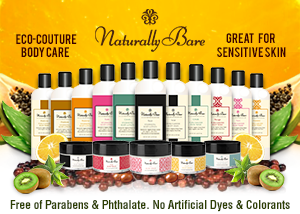Green Products: 7 Green Disposable Cutlery Options

The convenience of disposable cutlery is hard to beat. Keeping your silverware in its drawers when entertaining guests makes hosting easier with less to clean up, plus you’ll be saving water by not washing all those dirty utensils and you’ll be sure there is plenty enough to go around.
Similarly, when going on a picnic or throwing a work event, lugging all your personal silverware seems like a crazy idea. Plastic cutlery has been the go-to for occasions like this, but what happens to all those used forks after the birthday cake is eaten?
Plastic contributes 33.6 million tons of waste in the U.S. each year—of which only 6.5% is recycled and only 7.7% is combusted in waste-to-energy facilities; the remaining 85.8% ends up in landfills. According to EPA, the U.S. generated almost 7 million tons of non-durable plastic goods in 2012, which includes utensils, cups and plates.
Plastics can take up to a thousand years to decompose, leaving pollutants in soil and water (ReUsit). When plastics break down, they don’t biodegrade; they photodegrade, meaning that they break down to smaller toxic fragments which contaminate soil, waterways, and animals (upon digestion).
Even recycling plastic utensils is difficult and inefficient. Most plastic cutlery is made from a type of plastic known as polystyrene 1, more commonly referred to as Styrofoam. Most municipalities won’t recycle Styrofoam, so the plastic cutlery that is put into a recycling bin is usually sorted out at the recycling facility and sent to a landfill.
Most disposable utensils contain BPA, which you want to avoid touching your food—especially hot food. In addition, the plastics industry results in high environmental costs despite the low prices for its petroleum-derived goods, accounting for the landfill space, increased energy for manufacturing, and huge oil spills all over the world. You can make a more eco-conscious choice and show your guests that you care about the environment with quality, affordable and comparable alternatives to that plastic cutlery you’re familiar with.
There are different products out there offering different solutions. If you’re really interested in making sure that your disposable cutlery breaks down, then you ought to check out compostable options, such as World Centric’s BPI-certified TPLA utensils made of 70% polylactic acid (non-GMO corn-based resins) and 30% talc.
Compostable plastic will disintegrate under biological decomposition in a composite site and leave no toxic residue. Biodegradable plastic will degrade from naturally occurring microorganisms (e.g. bacteria, fungi).* However, you want to make sure your compostable or biodegradable plastics will end up in composting bins and programs—otherwise, they’ll emit methane (a very potent greenhouse gas) in the oxygen-free environment of a landfill.
*A note on biodegradable vs. compostable: compostable plastics break down at a rate consistent with known compostable material and have no eco-toxicity, whereas biodegradable plastics have no requirement for the time it takes to biodegrade nor for leaving no toxic residue (California Organics Recycling Council). Plant-based products are often not compostable. Look for the BPI certification (Biodegradable Products Institute logo) which means the product complies with strict scientific standards.
Other options made from sustainably-sourced materials include VerTerra’s BPI-certified products, made of naturally fallen palm leaves, steam, heat and pressure; Bambu’s organic bamboo compostable cutlery; and the FSC-certified birch wood toxic-free wooden utensils from Eco-Gecko.
If you’re in need of disposable dishware, try World Centric’s tree-free renewable resource bagasse (sugar cane fiber pulp) tableware, which is 100% compostable and biodegrades in 30-60 days. Joanne Hudson sells compostable and biodegradable leaf and fiber palm disposable plates from the fallen leaves of the Areca Palm tree. Leafware also uses fallen leaves for its sustainably-produced plates and bowls.
The benefits are clear: you’ll still be able to host gatherings and not worry about using your personal silverware, you can take these compostable, biodegradable, and sustainably-sourced alternatives on outings and to events, and you won’t be contributing to plastic waste or the plastics industry. Instead you can feel good about decreasing landfill waste and supporting an alternative market with an environmentally-conscious approach.
Also check out reusable to-go utensil sets! If you want to take it a step further, consider a zero-waste approach: single use items prevent zero waste – you can completely avoid the process of a creating a single use item over and over by going from disposables to reusables.
VerTerra: $5 for 25 pieces
World Centric: $3.41 for 24 pieces
Bambu: $10 for 24 pieces
Eco-Gecko: $10.89 for 100 pieces
Joanne Hudson Leaf & Fiber plates: $3.99 for 6
Leafware plates: $18 for 25
World Centric plates: $2.27 for 20


March 17th, 2015 at 2:20 pm
Dear Simone,
I enjoyed your article! Goes to the point, is quite clear, concise and brings light to the subject. Also I enjoy your whole magazine. I believe is important for our time to have publications as yours.
If I might add a comment? We have found out that across the US there is a huge difference in priorities set by State’s Governments towards waste management initiatives and the incorporation of Bioplastics into waste management flow. For instance, California has more than 55 Industrial Composting Facilities which will receive and process all PLA products in composting flow. However, if you take a look in Florida, there is NONE (Public) Industrial Composting Facilities to process PLA products. As a nation, it might be a point to address as a Comprehensive National Response to adapt to new material and technologies and therefore, generating efficient ways to process waste with minimal environmental footprint. We are proud owners of a local business in Florida which distribute palm leaves dinnerware from Leafware as, in our geographical location and due to above conditions, are the only backyard compostable products we have identifyed, after more than a year research.
Thanks so much for your articles, keep this great quest.
Best regards
Markus